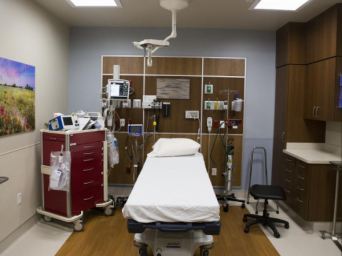KSHB: Saint Luke's Community Hospitals are a safe option for patients to seek emergency medical care during COVID-19 pandemic
Fear of being exposed to coronavirus has some people avoiding the hospital. Dr. Jeremiah Yerton, emergency physician and medical director of Saint Luke's Community Hospitals, said there have been people who have delayed needed medical care and patients shouldn't worry.
"We are starting to see patients present later in their disease process. Appendicitis is presenting with more cases of perforated appendicitis or later evolved heart attacks and strokes," he said.
Dr. Yerton spoke with KSHB about why it is important to still seek emergency medical treatment during COVID-19 and at we are doing calm patients fears and to keep patients safe.
KSHB spoke to a patient, Tim, who recently utilized a Saint Luke's Community Hospital for an emergency. Tim, who is from Independence, Missouri, drove 40 minutes, one-way, to seek emergency care so he didn't have to wait for hours in a local ER waiting room. He was home after receiving blood work, a CT scan, talking with a physician about his diagnosis and getting an antibiotic prescription in only two and a half hours.
KSHB explains how Saint Luke's Community Hospitals are different from urgent care. Dr. Yerton explains what measures are in place to help protect patients, even those who are high risk and may have concerns.
Saint Luke's has many options for patients to seek care - Saint Luke's 24/7, Saint Luke's Convenient and Urgent Care, and Saint Luke's Community Hospitals.

